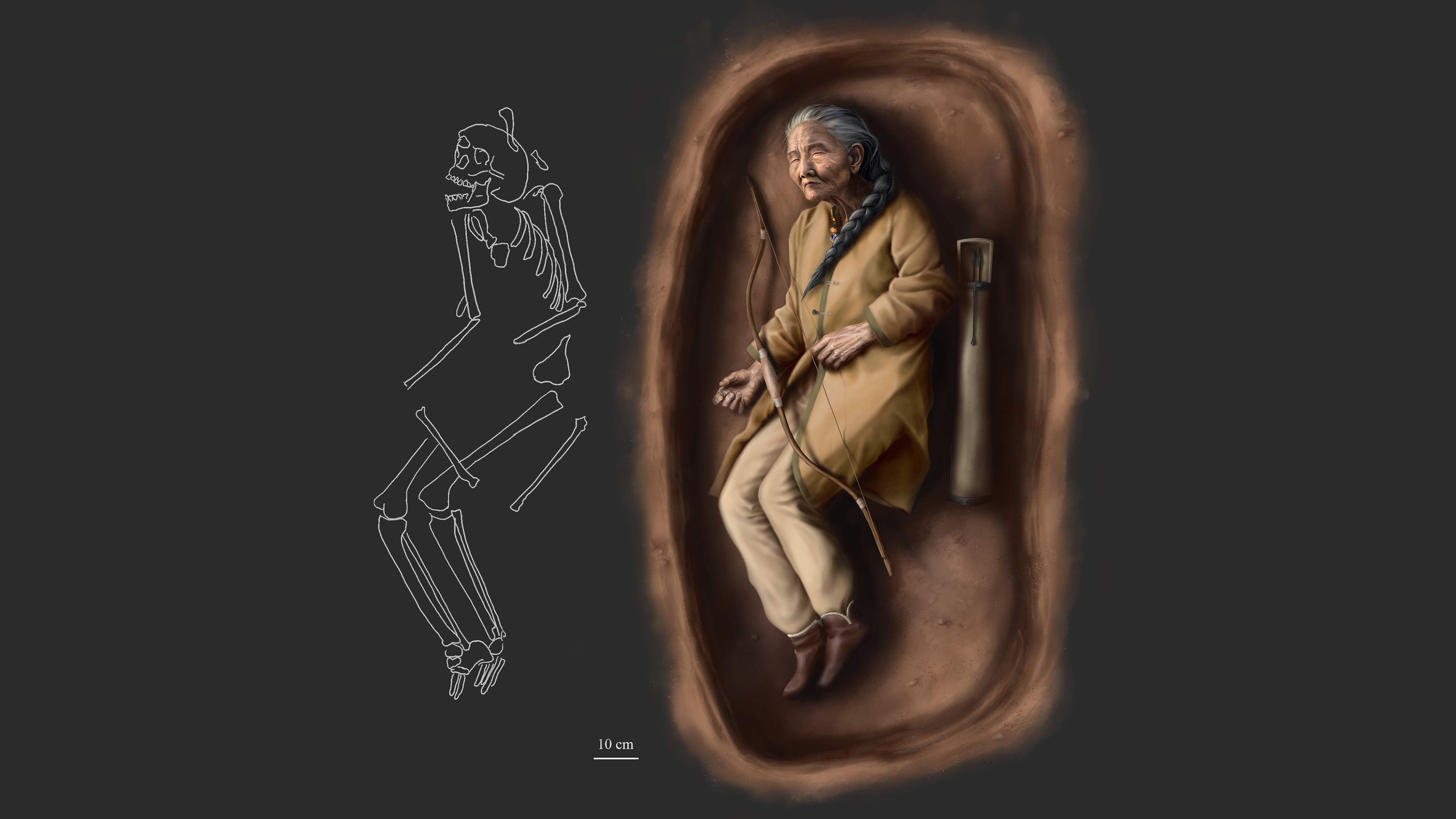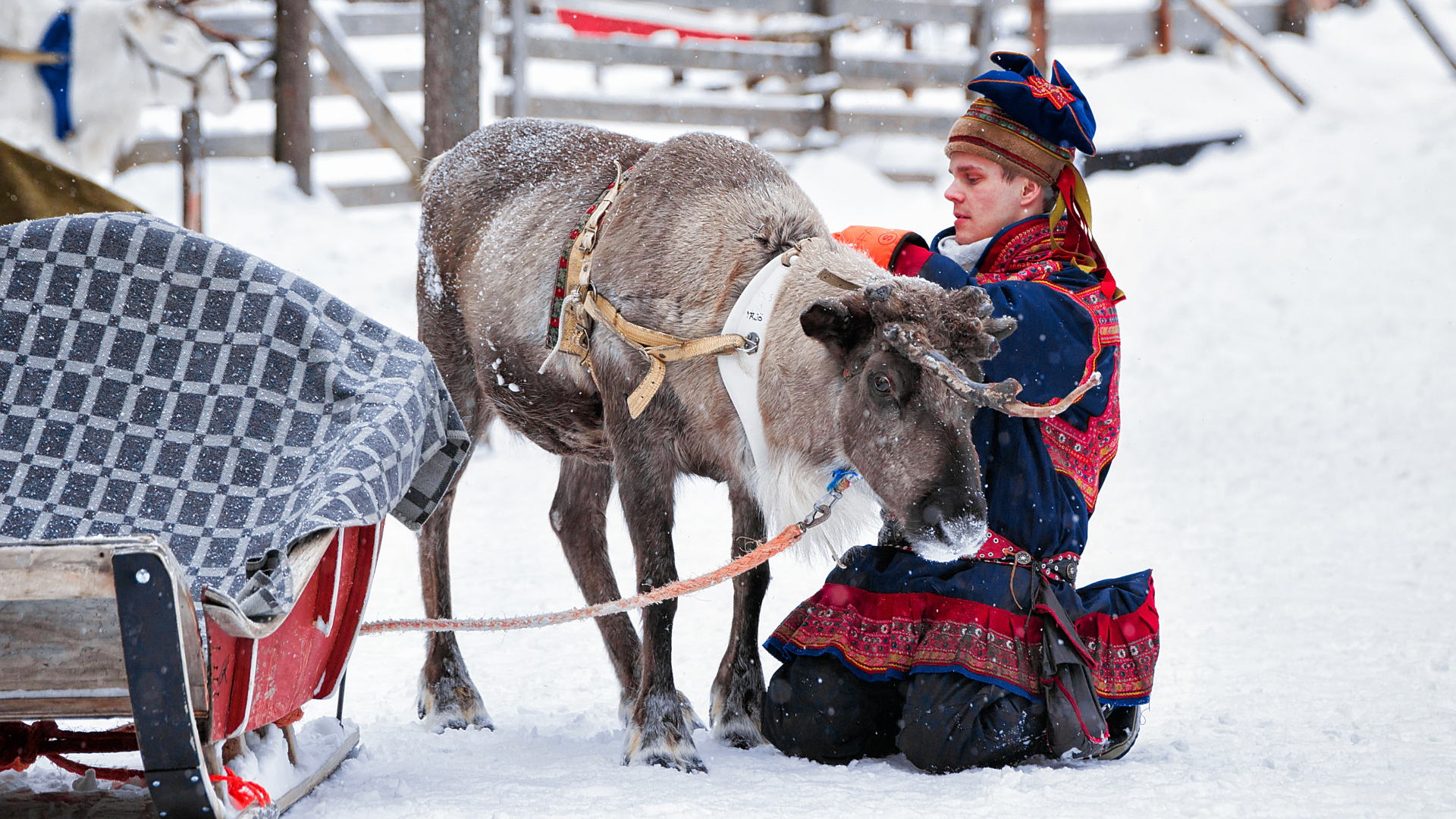10th-century woman buried with weapons in Hungary is 1st of her kind, but researchers are hesitant to call her a warrior
A woman buried with archery equipment in 10th-century Hungary is unusual but may not necessarily have been a warrior.

A medieval skeleton buried with archery equipment in a 10th-century cemetery in Hungary belongs to a woman, a new DNA analysis finds. But because her grave is so unique, researchers have stopped short of calling her a warrior.
"Evaluating the possible 'occupation' of the individual is a complex problem," Balázs Tihanyi, a bioarchaeologist at the University of Szeged in Hungary and colleagues wrote in their study published Nov. 26 in the journal PLOS One, but the woman "may have had a lifestyle similar to other individuals buried with weapons in the cemetery."
The burial was one of 262 discovered in the early 1980s at the archaeological site of Sárrétudvari-Hízóföld (SH) in east-central Hungary. Dated to the Hungarian Conquest period, the cemetery included males and females of all ages. While 58 of the burials contained weapons used in archery — arrowheads, quivers or bow plates — only one of the weapon graves also contained jewelry typically found in female graves.
To better understand this unusual burial — designated SH-63 — Tihanyi and colleagues analyzed the bones and the person's DNA. They discovered that SH-63 was an older adult female with surprisingly lightweight bones, which suggested a potential diagnosis of osteoporosis.
Additionally, the researchers identified several healed fractures on the woman's skeleton. Her right upper arm bone had been broken in two places, as had her right and left shoulder blades. These could have resulted from a fall on an outstretched arm, the team wrote in the study, which is common in older women affected by osteoporosis.
However, the bony injuries this woman dealt with were also seen in men from the SH cemetery, specifically those who were buried with weapons and horse riding equipment. In looking at the variation in the bones and joints of SH-63, the researchers discovered that she likely engaged in some sort of repetitive physical activity, such as horse riding.
Get the world’s most fascinating discoveries delivered straight to your inbox.
In the Hungarian Conquest period, the Hungarians (also called Magyars) arrived in the Carpathian Basin by the beginning of the 10th century, integrating with or conquering local populations, in part thanks to their mounted archery skills. Weapons are often found in men's graves from this period, the researchers noted, but only single arrowheads are found in women's graves, often interpreted as amulets rather than weapons.
In the study, the researchers acknowledge that the weaponry found in the woman's grave is "unlikely" to be an amulet. But, they argue, whether she can be considered a warrior "must remain an open debate." They point out in the study that, in nomadic tribes of the eastern steppes, women commonly learned how to defend themselves and their livestock and even rode horses — but were not warriors. Nevertheless, the researchers wrote that they "can confidently conclude that this individual indeed represents the first known female burial with [a] weapon from the Hungarian Conquest period in the Carpathian Basin."
Kori Filipek, a bioarchaeologist at the University of Derby in the U.K. who was not involved in the study, told Live Science in an email that SH-63 highlights "potentially overlooked gender roles such as female archers."
The new research also underscores problems with assigning biological sex on the basis of grave goods alone, Filipek said, and "the authors' analyses of Burial SH-63 will hopefully incite reevaluations of other 'armed' burials discovered in this region."

Kristina Killgrove is a staff writer at Live Science with a focus on archaeology and paleoanthropology news. Her articles have also appeared in venues such as Forbes, Smithsonian, and Mental Floss. Killgrove holds a PhD in biological anthropology and an MA in classical archaeology, and she was formerly a university professor and researcher. She has received awards from the Society for American Archaeology and the American Anthropological Association for her science writing.
